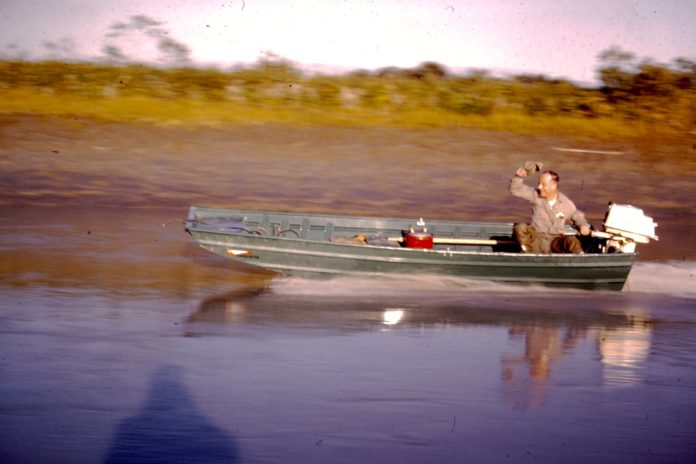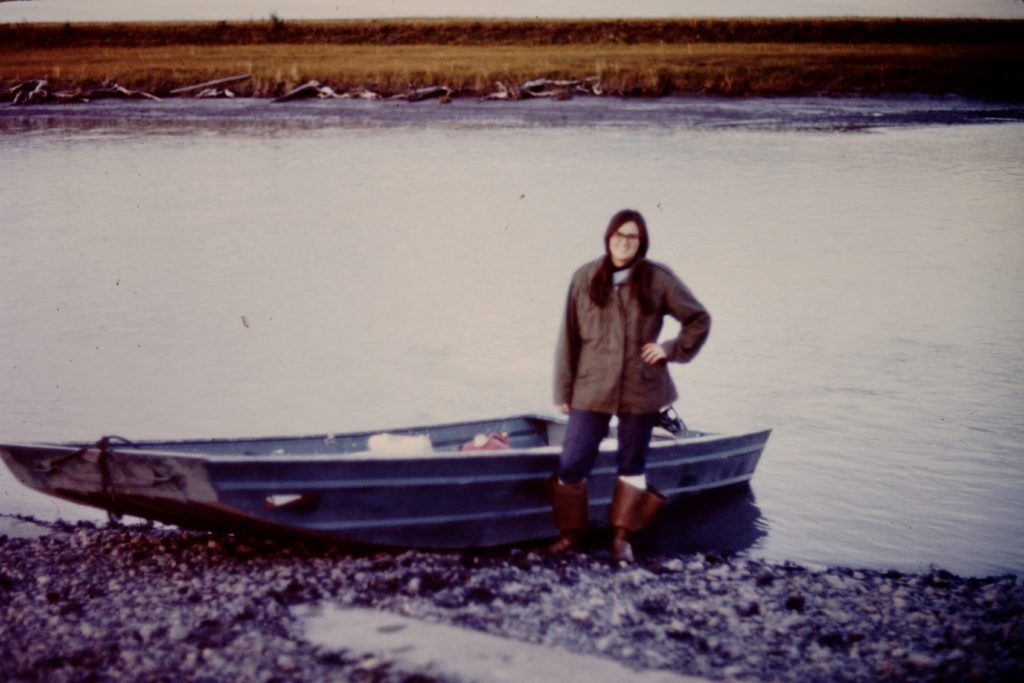
The Alaganik Landing road was built shortly after the 1964 Good Friday earthquake to provide tidal access to Alaganik Slough, which was now 9-feet shallower due to the uplift caused by that major geological event.
For duck hunters traveling down the slough, in essence this meant that the level of the new high tide was actually that of the old low tide. And the new low tide was an unheard of 9 feet lower.
Sandbars, stumps and other obstacles that had never been seen were now part of the navigational hazards.
It quickly became obvious that a change in types of boats being used to go down the river was inevitable.
For example, we had been running a 22-foot plank and plywood work skiff powered by two long-shaft Johnson 18 Seahorse outboards to reach our cabin at Pete Dahl.
Try pulling that monster off a sandbar. Like many others, we switched to a lighter craft. In our case, it was a 14-foot metal Quachita powered by a single outboard with a short shaft.
These boats were such hot items that Johnny French and the gang at the Cordova Outboard Shop had a stack of them for sale right outside their building.
The Quachitas were so light two people could pick them up and carry them. If necessary, the outboard could be taken off the transom and moved separately. However, these new craft could not haul nearly the amount of freight and passengers as the older wooden boats. Nor were they well suited for often rough weather in lower Alaganik.
Hence the late 1960s were an adventurous era for weekend duck hunters trying to get to their cabins, and a boon for the Cordova Outboard shop gang, who could barely keep up with the Monday morning delivery of damaged outboards.
So, by early September of 1966 we had made several trips to the cabin in the Quachita, and in the process put some heavy hours on its outboard.
With nice weather and decent tides, it was time for a family cruise to the cabin. Mom and Dad, plus Sue Ekemo and I, would enjoy a three-day outing.

Following a successful season seining with Captain Olaf Gildnes, I had earned enough money to buy an engagement ring, and it would be my future bride-to-be’s first overnight visit to Pete Dahl, with her future in-laws as chaperones.
At the landing, we loaded the 14-footer with gear, piled in, and cast off. I hand-cranked the 18-horse. It purred as we backed away from the landing. Then I tried to shift it into forward gear. With no luck.
There is a first time for everything, but this was not the time for this.
We monkeyed around and tried various fixes without success. The tide would soon be falling; the Outboard shop would soon be closing.
Dad had quite an array of pet phrases for various challenging situations, so it was no surprise when he said, “Ah, the hell with it.”
But the addendum was a shocker.
“We’ll back down the river!”
Wait a minute. It takes 40 minutes to reach our cabin cruising down the river at 20 mph. So, let’s see, how long will it take at 5 mph in reverse? Will we even have enough gas?
It was a nice day. Sue’s first test had arrived, and we hadn’t even left the landing. She smiled and said it sounded like fun to her.
Just in case, Dad added some reassuring words: “Don’t worry. Dick will drop us off a couple times where to slough switches back on itself, so we can walk to speed up the trip.”
Test No. 2. She glanced at me and nodded OK. Atta girl.
Maybe Dad noticed the glance between us.
“Plus, when we get to the cabin, we can call the Outboard Shop on the VHF and have them send down the parts we need on a plane.”
Maybe they better send a mechanic with the parts, thought I.
But one step at a time.
I cranked the motor, put it in reverse, and discovered it would be necessary to physically hold the lower unit down, as with any significant level of rpm’s, the prop would cavitate out of the water.
As the saying goes, we were underway.
Cruising down the river — in reverse.
Next week: Part II: The weather changes and planes can’t fly














